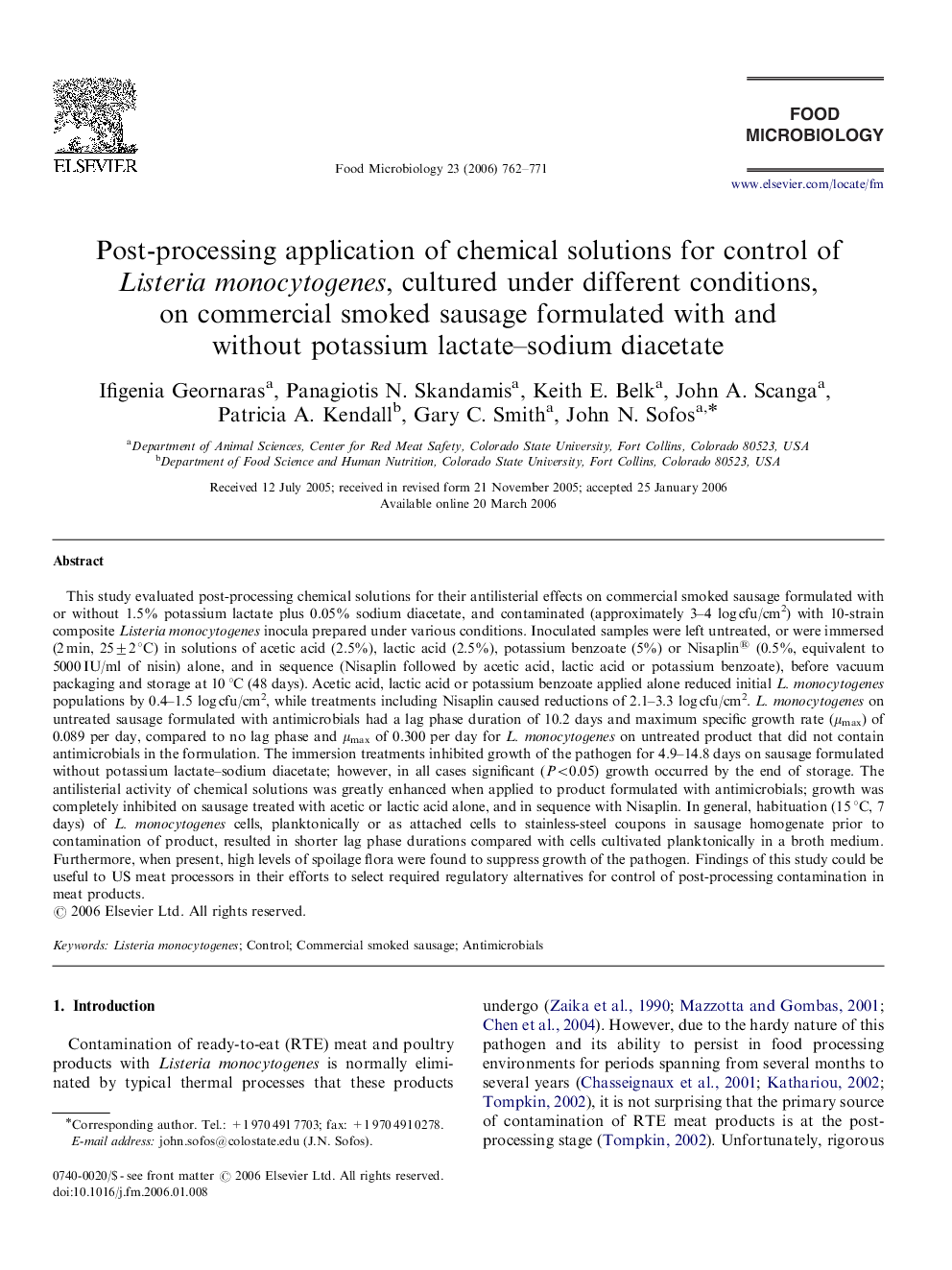| کد مقاله | کد نشریه | سال انتشار | مقاله انگلیسی | نسخه تمام متن |
|---|---|---|---|---|
| 4363945 | 1301588 | 2006 | 10 صفحه PDF | دانلود رایگان |

This study evaluated post-processing chemical solutions for their antilisterial effects on commercial smoked sausage formulated with or without 1.5% potassium lactate plus 0.05% sodium diacetate, and contaminated (approximately 3–4 log cfu/cm2) with 10-strain composite Listeria monocytogenes inocula prepared under various conditions. Inoculated samples were left untreated, or were immersed (2 min, 25±2 °C) in solutions of acetic acid (2.5%), lactic acid (2.5%), potassium benzoate (5%) or Nisaplin® (0.5%, equivalent to 5000 IU/ml of nisin) alone, and in sequence (Nisaplin followed by acetic acid, lactic acid or potassium benzoate), before vacuum packaging and storage at 10 °C (48 days). Acetic acid, lactic acid or potassium benzoate applied alone reduced initial L. monocytogenes populations by 0.4–1.5 log cfu/cm2, while treatments including Nisaplin caused reductions of 2.1–3.3 log cfu/cm2. L. monocytogenes on untreated sausage formulated with antimicrobials had a lag phase duration of 10.2 days and maximum specific growth rate (μmax) of 0.089 per day, compared to no lag phase and μmax of 0.300 per day for L. monocytogenes on untreated product that did not contain antimicrobials in the formulation. The immersion treatments inhibited growth of the pathogen for 4.9–14.8 days on sausage formulated without potassium lactate–sodium diacetate; however, in all cases significant (P<0.05P<0.05) growth occurred by the end of storage. The antilisterial activity of chemical solutions was greatly enhanced when applied to product formulated with antimicrobials; growth was completely inhibited on sausage treated with acetic or lactic acid alone, and in sequence with Nisaplin. In general, habituation (15 °C, 7 days) of L. monocytogenes cells, planktonically or as attached cells to stainless-steel coupons in sausage homogenate prior to contamination of product, resulted in shorter lag phase durations compared with cells cultivated planktonically in a broth medium. Furthermore, when present, high levels of spoilage flora were found to suppress growth of the pathogen. Findings of this study could be useful to US meat processors in their efforts to select required regulatory alternatives for control of post-processing contamination in meat products.
Journal: Food Microbiology - Volume 23, Issue 8, December 2006, Pages 762–771